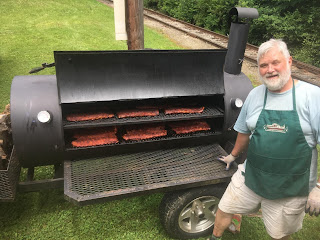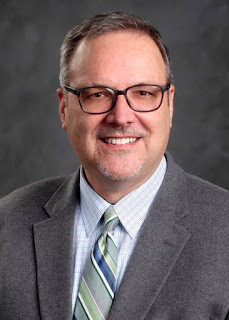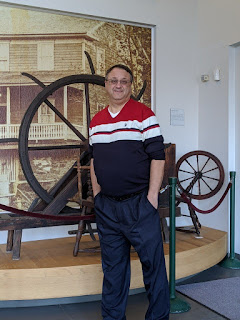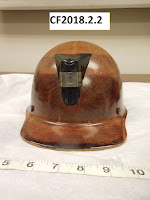It has been a busy week on social media for Pennsylvania Trails of History sites. I'm trying my best to keep up with all the activity, but it's impossible. I'm providing a few examples below, but to really get the full picture you'll be best served by following Pennsylvania Trails of History and/or your favorite sites on Facebook (try 'em all - their Facebook links are on the April program page).
National Volunteer Week 2020
 |
| Part of the graphic design of PHMC's Volunteer of the Year awards ceremony booklet (design by Lauren Bennett) |
In last week's post, we gave you info on this year's PHMC Outstanding Service Award recipients and the Volunteer of the Year honorees for the Bureau of Historic Sites and Museums, The State Museum of Pennsylvania, and the Pennsylvania State Archives. We had planned to celebrate with our honorees in person, but well, you know. We still hope to reschedule that event. As is true for much of what we're doing on the Trails of History right now, we managed lots of online "thank you" posts. As National Volunteer Week draws to a close, here are a few examples (you can find many more on the Facebook pages of our Trails of History sites - links are on the April program page).
PHMC's executive director, Andrea Lowery, (above) provided a heartfelt #ThankYouFromHome to all of our honorees, which PHMC's digital director posted to the Pennsylvania Trails of History Facebook page. Video "thank yous" were also recorded by Brenda Reigle, director of the Bureau of Historic Sites and Museums (her video); Beth Hager, director of The State Museum of Pennsylvania (her video); and David Carmicheal, director of the Pennsylvania State Archives (his video).
Other sites posting "thank you" videos included Erie Maritime Museum and U.S. Brig Niagara (for Outstanding Service Award winners Jack (in memoriam) and Maxine Gold, and the museum's co-honorees for Volunteer of the Year), Drake Well Museum and Park, and the Railroad Museum of Pennsylvania.
#MuseumSunshine
On Tuesday, April 21, museum social media accounts were bright and shiny, sharing artwork, objects, and images evoking sunlight. As you can see above, Bushy Run Battlefield took part with an array of images from the site. Daniel Boone Homestead posted a sunny shot of budding spring greenery, and Ephrata Cloister highlighted images of the sun in two fraktur letters in the Christian ABC book in their collection.Earth Day
Wednesday, April 22, was the 50th anniversary of the first Earth Day. Although the need for distancing certainly torpedoed lots of plans for events to mark the day, social media proved to be up to the challenge of keeping it on people's minds. Pennsbury Manor (above) shared a beautiful photo of a blossoming apple tree in their garden (noting that their tree is a descendant of Sir Isaac Newton's apple tree - you think you know a site). The Pennsylvania Lumber Museum's Facebook cover photo proclaimed that "Every Day is Earth Day," and the Pennsylvania Anthracite Heritage Museum posted photos and info noting that the museum was built as part of a mine reclamation project - the before and after photos are striking.































